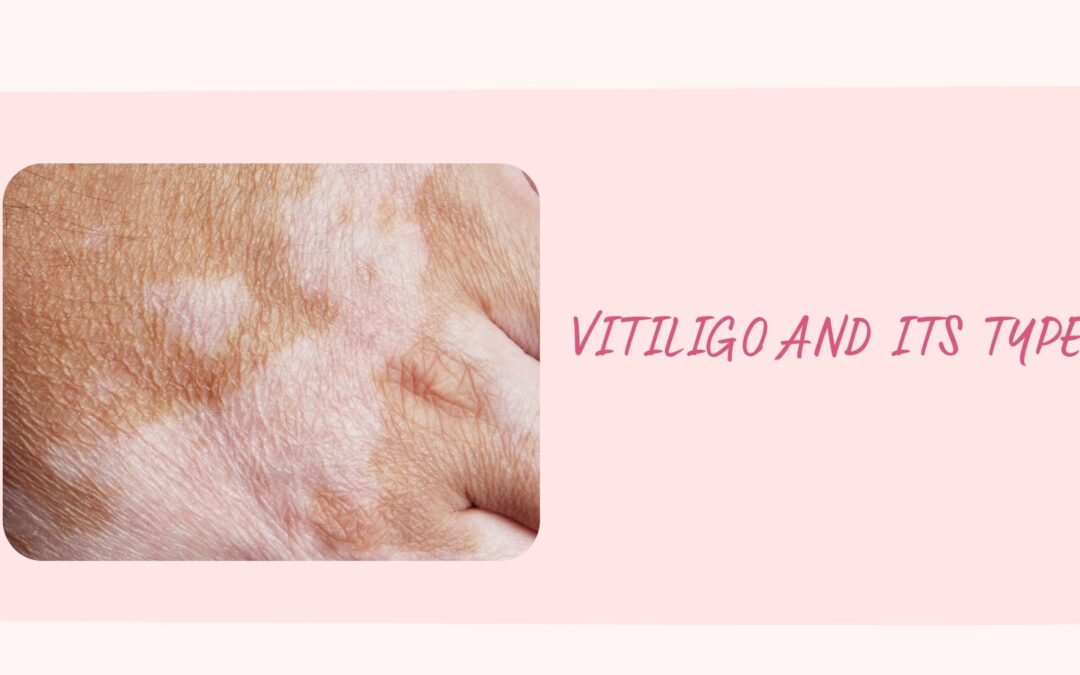Vitiligo is a chronic (long-lasting) depigmenting autoimmune disorder that causes patches of skin to lose pigment or color. This happens when the melanocytes – skin cells that make pigment – are attacked and destroyed, that leads to the disruption of the membrane bound vesicles known as Melanosomes. The production of melanin takes place in Melanosomes from L tyrosinase. This destruction results in hypopigmentation, a skin condition known as Vitiligo causing the skin to turn a milky-white color.
Types of Vitiligo
Vitiligo is generally classified into two main categories: Non-Segmental Vitiligo (NSV) and Segmental Vitiligo (SV). Each type has its characteristics and subtypes.
- Non-Segmental Vitiligo (NSV)
This is the most common form of vitiligo and is characterized by bilateral and symmetrical patches of depigmentation.
- Generalized Vitiligo: This type involves widespread depigmentation across various parts of the body. The patches are usually symmetrical and can develop on any area, including the face, trunk, and limbs.
- Vulgaris: Often considered a subtype of generalized vitiligo, vulgaris presents with multiple depigmented patches, often appearing on both sides of the body. It typically begins in childhood or early adulthood.
- Acrofacial Vitiligo: This type specifically affects the extremities (hands, feet) and facial areas. It often starts as small patches around the eyes, mouth, and on the fingers.
- Universal Vitiligo: In this rare form, nearly all of the body’s skin loses its pigment, leading to a very light appearance overall. This can also include depigmentation of hair and mucous membranes.
- Segmental Vitiligo (SV)
- Segmental vitiligo tends to be localized and affects one side of the body or a specific area.
- Localized Vitiligo: This type usually appears as one or a few isolated patches in a specific region, often not progressing significantly over time.
- Focal Vitiligo: Characterized by one or more small spots of depigmentation in one area, this type is often stable and does not spread.
Other Considerations
- Associated Conditions: Vitiligo can be associated with other autoimmune disorders such as thyroid diseases, alopecia areata, and type 1 diabetes.
- Diagnosis: Diagnosis is primarily based on clinical examination. Dermatologists may use a Wood’s lamp (a special UV light) to enhance the visibility of depigmented areas and to rule out other skin conditions.
- Treatment Options: Treatments aim to restore skin color or reduce contrast. Options include:
- Topical corticosteroids: To reduce inflammation and promote repigmentation.
- Phototherapy: Controlled exposure to ultraviolet light to stimulate melanocyte activity.
- Depigmentation therapy: For patients with extensive vitiligo who wish to have an even skin tone.
- Cosmetic camouflage: Using makeup or self-tanners to cover white patches.
Psychological Impact
Vitiligo can have significant emotional and psychological effects on individuals, often leading to feelings of embarrassment, anxiety, or low self-esteem. Support groups and counselling can help individuals cope with the condition.
Conclusion
Vitiligo is a complex skin condition with various types and manifestations. Understanding the different forms can aid in diagnosis and management, improving the quality of life for those affected.

